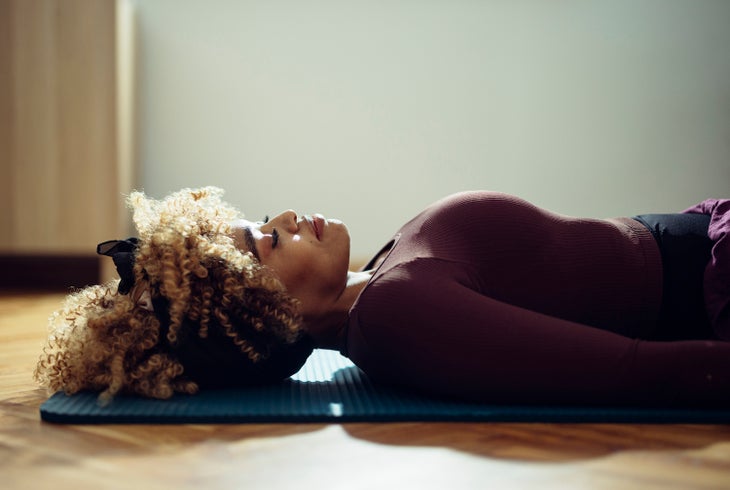How to Improve Your Breathing if You Want To Hike More
We spend many hours working on our cardio as backpackers, only to still be out of breath when we hit the route. This might be because the terrain is more difficult than you anticipated, your backpack is too heavy, or your breathing technique needs improvement. Most likely, you aren’t breathing in a way that will maximize and optimize your benefits. You may learn the benefits of effective breathing with some practice. Let’s start by dissecting the breathing muscles we employ.
Breathing Muscles
- The major breathing muscle, the diaphragm, is located beneath the lungs at the bottom of the rib cage like a half open umbrella. This is the “breathing canister’s” top.
- The inner and outer obliques, the transversus abdominis, and the rectus abdominis (the six-pack muscles) make up the abdominals. They comprise the “breathing canister’s” walls.
- The “breathing canisterbottom “‘s is made up of the pelvic floor.
The diaphragm performs the majority of the effort when breathing passively, with a little assistance from the intercostal rib muscles. During exercise, the entire “breathing canister” should expand and compress uniformly in all directions. There shouldn’t be any “bubbles,” which frequently appear when breathing is ineffective.
Secondary muscles frequently take over and seize the spotlight for travelers struggling up steep hills. The pectoralis minors, scalenes and SCM neck muscles, upper traps, intercostals, and lumbar back muscles are examples of muscles that should only be used to support breathing. Overuse of these muscles can cause discomfort and respiratory problems, which have a detrimental effect on lung capacity and the exchange of oxygen and carbon dioxide.
What causes this to occur?
Due to the necessity of carrying a heavy burden while breathing deeply, frequently for extended periods of time, during hiking, these secondary muscles are generally in a shortened position. For instance, the chest strap might prevent your ribs and breastbone from moving, which will force your inhales into other parts of your body, such the upper back. Moreover, the hipbelt on a backpack interferes with correct diaphragmatic contraction, breathing expansion into the lower back and abs, and pelvic floor relaxation.

Correct 360-degree breathing when exercising
As the ribs rise like bucket handles during inhalation, the diaphragm flexes downward and causes the base of the ribs to expand from front to back and side to side. At the same time as the pelvic floor relaxes, the sternum raises like the handle of an old-fashioned water pump (the opposite is true for exhale). It’s crucial that the midsection and lower back, as well as the abdomen, expand somewhat during inhalation. Avoid holding your breath when you inhale.
Keep your shoulders from shrugging and keep your ribcage from tilting up as you inhale. Your back’s “hinge point” between the upper and lower spine is created as a result. Allowing your head to float forward or to tuck your tummy in while inhaling is a major no-no.
Also, it’s crucial to avoid cinching your waist when exhaling and to exhale gently and for a longer period of time than you inhaled. In fact, as you exhale, you want your lower abs to contract in unison with the bottom of your ribs. Finally, take your time breathing; the better your body is able to exchange oxygen and carbon dioxide, the longer you inhale and exhale.
How to ascend a hill without gasping for air
It’s crucial to wear a pack that fits well, has the weight evenly distributed on the hips, and has the load adequately adjusted to maintain proper spinal alignment. Learning to breathe 360 degrees while wearing a full pack is equally crucial if you want to exert the least amount of effort while properly bracing your spine. When performing high-intensity exercises like large step-ups, exhale deliberately and make sure to employ your entire abdominal region, not just the bottom portion under your hipbelt. Hold for a brief while at the bottom of the exhale, then “let go” of the breath and allow the subsequent inhalation to begin naturally on the rebound.
Lastly, refrain from mouth breathing. Yeah, mouth breathing seems frightening, but it really triggers your sympathetic nervous system and “fight-or-flight” instinct. While though mouth breathing may occasionally be necessary during particularly challenging periods, with practice, learning to breathe via your nose will activate your parasympathetic nervous system, which will settle your breathing and maintain a low heart rate.
Breathing Techniques For Successful Hiking
To improve your uphill hiking efficiency, do these breathing exercises at home two to three times a week. You may perform these whenever you have a few minutes or while working out.
Breathing 360° Hookline
three sets of 5–10 breaths each. 5 seconds for inhalation and 10 seconds for exhalation, including the hold.
- With your knees bent and your feet flat, lie on your back.
- Slowly take a breath in, allowing your lower abs to somewhat fill and your pelvic floor to relax. Then, extend your inhalation towards your mid-back ribs, and last, your front chest.
- Exhale fully by pulling in your lower abdomen (imagine zipping up a pair of narrow pants) and bringing your rib cage together and down flat. Squeeze out every last bit of air and hold for 3 to 5 seconds at your fullest exhalation.
- Be calm and wait for the next breath to spontaneously begin once you exhale.
To breathe more deeply, avoid tilting your ribcage up, which might unevenly bloat your lower or higher belly and cause your shoulders to shrug.
Pallof Press
Do three sets of eight repetitions while holding a medium-weight resistance band at chest level perpendicular to your body. Carry a small backpack and gradually raise the burden each week by 10% to 15%.
- With your knees slightly bent, stand on two parallel feet. Put both hands in front of your breastbone and hold the band there. Shift your shoulders downward and back.
- Without twisting your torso, exhale as you extend your hands from the shoulder blades.
- Pulling your shoulder blades together, inhale as you bring your hands back to the starting position.
Move from the shoulder blades, not the arms, and keep your spine and pelvis neutral (don’t shrug your shoulders). Also, breathe in and out evenly, exactly like you did during the Hookline Breathing exercise.
Abducted and Adducted Lunges
Make three sets of eight repetitions using a medium-weight resistance band. Carry a small backpack and gradually raise the weight each week by 10 to 15 percent.
- Affix the band such that it is at knee height and parallel to your front knee.
- Put the other foot behind you and insert either foot within the band.
- When you lower yourself over two counts into a 90/90 lunge with your ribs over your pelvis, breathe in.
- As you rise over two counts, let out a breath. Before swapping feet, finish all repetitions on one side without bringing the feet together.
- Keep your pinky toe firmly planted and your big toe’s mound pushed back.
- Do the activity twice. For each foot, anchor the band once on the left and once on the right.
When performing these lunges, don’t lean forward and keep your ribcage stacked over your pelvis with your front knee over your front ankle. Take a deep breath into your lower abdominals and midback, then exhale evenly.

